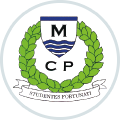Design and Technology
Design and Technology - Progression of Learning Skills
At Maylandsea, design and technology prepares children to deal with tomorrows rapidly changing world. It encourages children to become independent, creative problem solvers and thinkers as individuals and part of a team. It enables them to identify needs and opportunities and to respond to them by developing a range of ideas and by making products and systems. Through the study of design and technology, they combine practical skills with an understanding of aesthetic, social and environmental issues, as well as functions and industry. This allows them to reflect on and evaluate past and present technology, its uses and impacts.
Aims:
• To develop imaginative thinking in children;
• To enable them to talk about and record evaluative points about their own and existing designs;
• To enable children to talk about how things work, and to draw and model their ideas;
• To encourage children to select appropriate tools and techniques for making a product, whilst following safe procedures;
• To foster enjoyment, satisfaction and purpose in designing and making;
• To use ICT software to assist our designing and learning.
Curriculum Implementation
Design and technology is a crucial part of school life and learning and it is for this reason that as a school we are dedicated to the teaching and delivery of a high quality Design and Technology curriculum; through well planned and resourced projects and experiences. The teaching of Design Technology across the school follows the National Curriculum through the use of Design and Technology Association's 'Projects On A Page' documents. Children design products with a purpose in mind and an intended user of the products. Food technology is implemented across the school with children developing an understanding of where food comes from, the importance of a varied and healthy diet and how to prepare this.
When designing and making, the children are taught to:
Design
· use research and develop design criteria to inform the design of innovative, functional, appealing products that are fit for purpose, aimed at particular individuals or groups
· generate, develop, model and communicate their ideas through discussion, annotated sketches, cross-sectional diagrams, prototypes, pattern pieces and computer-aided design
Make
· select from and use a wider range of tools and equipment to perform practical tasks (for example, cutting, shaping, joining and finishing) accurately
· select from and use a wider range of materials and components, including construction materials, textiles and ingredients, according to their functional properties and aesthetic qualities
Evaluate
· investigate and analyse a range of existing products
· evaluate their ideas and products against their own design criteria and consider the views of others to improve their work
· understand how key events and individuals in design and technology have helped shape the world
Technical knowledge
· apply their understanding of how to strengthen, stiffen and reinforce more complex structures
· understand and use mechanical systems in their products
· understand and use electrical systems in their products
· apply their understanding of computing to program, monitor and control their product
Design and Technology also embeds our learning behaviours. It is an inspiring, rigorous and practical subject, requiring creativity, resourcefulness, and imagination. Pupils design and make products that solve real and relevant problems within a variety of contexts. It is very cross - curricular and draws upon subject knowledge and skills within mathematics, science, history, computing and art. Children learn to take risks, be reflective, innovative, enterprising and resilient. Through the evaluation of past and present technology they can reflect upon the impact of design technology on everyday life and the wider world.
